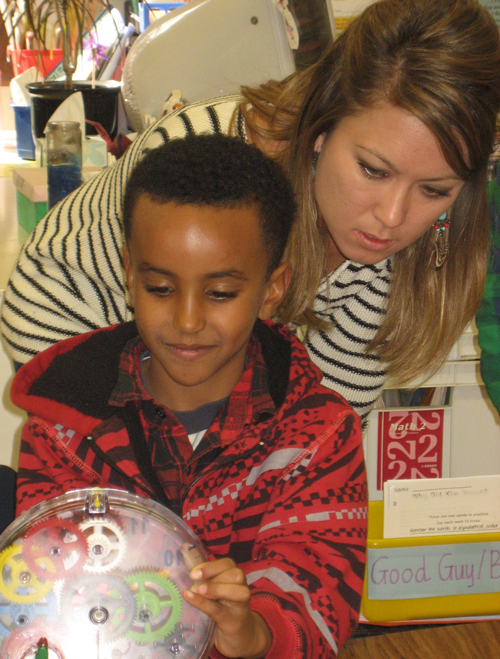Exploring Physics, Earth Science, and Science Education with Melia
May 2012
Melia Hong has been teaching second graders at John Muir Elementary School in Berkeley for the last eight years, and prior to that, she taught eighth graders in Oakland. She enjoys working with her class through hands-on science experiments and nature investigation.
 Melia Hong has been teaching second graders at John Muir Elementary School in Berkeley for the last eight years, and prior to that, she taught eighth graders in Oakland. She enjoys working with her class through hands-on science experiments and nature investigation.
Melia Hong has been teaching second graders at John Muir Elementary School in Berkeley for the last eight years, and prior to that, she taught eighth graders in Oakland. She enjoys working with her class through hands-on science experiments and nature investigation.
Melia remembers one particular experiment that she did at school as a child where she swung a cup that was filled with water in large circles. To her great fascination, the water stayed inside the cup even when she was swinging it around!
Spending time outdoors with her family also provided Melia with ample opportunities for exploration. She likes to teach her favorite science unit, Earth Science, at the beginning of the school year, because she gets to engage her students by getting them “to become geologists and paleontologists” for the following nine months. Well after the unit is finished, students bring in interesting rocks they have found to share with the rest of the class.
Melia truly enjoys working with her students. Over the years, she has come to appreciate the “challenge of creating engaging and informative science units and balancing learning with opportunities for hands-on experimentation and observation.”
One of the most enjoyable science experiences she has had with her students is making volcanoes. After much reading, studying, and diagramming, her class built model volcanoes. Out of great excitement, they were quite generous when mixing the ingredients, so when ten, medium-sized volcanoes began oozing at once, she adapted the lesson and now “tends to do one large model for the class.”
Despite her enthusiasm for science, she says her biggest hurdle is finding the time to integrate it into the rest of the curriculum for her second graders. “Oftentimes, reading, writing, and math take up the bulk of the day. It takes a lot of work, time, resources, and careful planning to find opportunities to integrate science into those areas.”
At home, her science experiences continue through the eyes of her three-year-old son. His curiosity and wonder at how the world works motivates family outings. They especially enjoy visiting the Lawrence Hall of Science and Monterey Bay Aquarium to explore. “My science-related hobbies at this time center around my son…It is such a joy watching him experiment with things around him, as he comes to understand cause and effect.”
Posted 5/7/2012